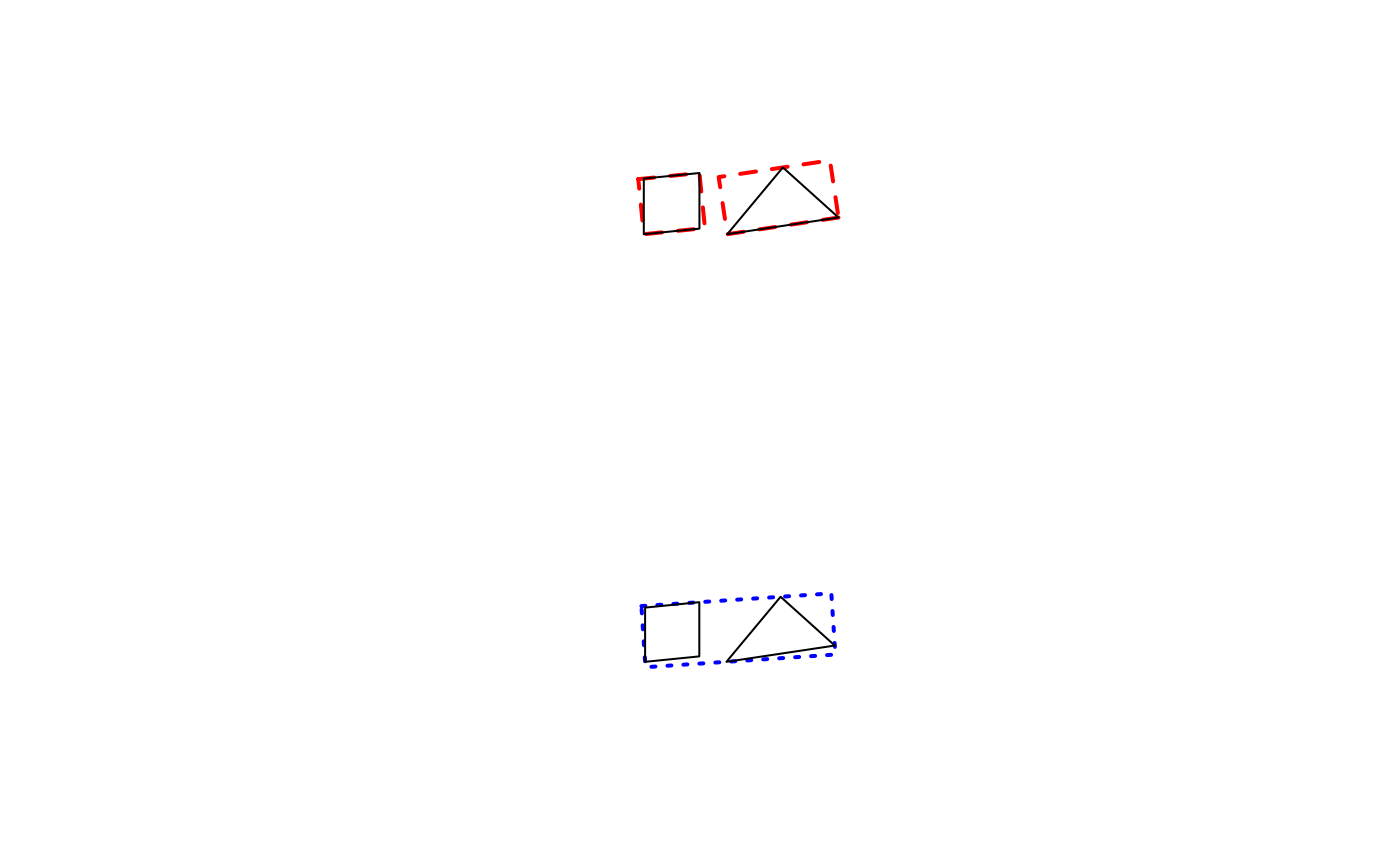Centroid of Geometry
topo-unary-gMinumumRotatedRectangle.RdReturns the minimum rotated rectangular POLYGON which encloses the input geometry.
gMinumumRotatedRectangle(spgeom, byid=FALSE, id = NULL)Arguments
- spgeom
sp object as defined in package sp
- byid
Logical determining if the function should be applied across subgeometries (TRUE) or the entire object (FALSE)
- id
Character vector defining id labels for the resulting geometries, if unspecified returned geometries will be labeled based on their parent geometries' labels.
Details
Returns the minimum rotated rectangular POLYGON which encloses the input geometry. The rectangle has width equal to the minimum diameter, and a longer length. If the convex hill of the input is degenerate (a line or point) a LINESTRING or POINT is returned. The minimum rotated rectangle can be used as an extremely generalized representation for the given geometry.
See also
Examples
if (version_GEOS0() >= "3.9.0") {
x = readWKT(paste("GEOMETRYCOLLECTION(POLYGON((0 0,10 1,10 11,0 10,0 0)),",
"POLYGON((15 0,25 12,35 3,15 0)))"))
# Minimum rotated rectangles of both the square and circle independently
c1 = gMinumumRotatedRectangle(x,byid=TRUE)
# Minimum rotated rectangle of square and circle together
c2 = gMinumumRotatedRectangle(x)
opar <- par(mfrow=c(2,1))
plot(c1, border='red', lwd=2, lty=2)
plot(x,add=TRUE)
plot(c2, border='blue', lwd=2, lty=3)
plot(x,add=TRUE)
par(opar)
}
